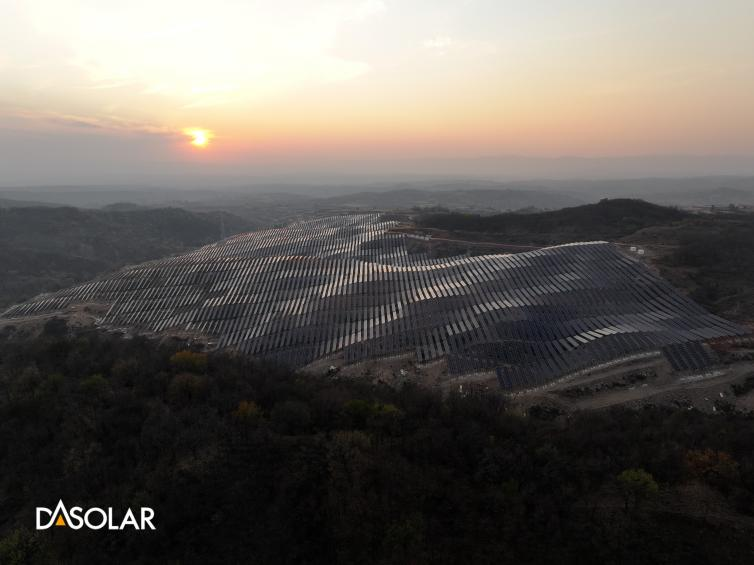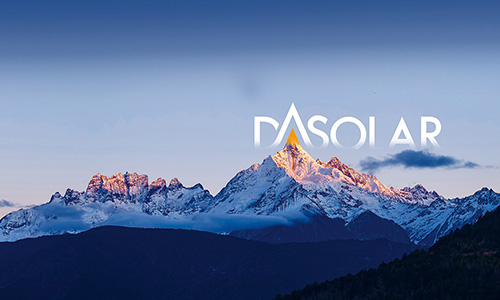Saving over 25% of Land: DAS Solar flexible bracket enhances hill sustainable living
2023-12-16
With the rapid development of the photovoltaic industry and the strong support of composite development models such as "agri-voltaics" and "fishery agri-voltaics," the application scenarios for PV plants are becoming more diverse and complex. In the development of the photovoltaic market, it has become increasingly important to maximize land utilization rates. A flexible bracket has been developed by DAS Solar to meet this demand.
Qin Country 200MW PV Project is located in Qin County, Changzhi City, Shanxi Province. In addition to the elevated altitude of the project site, the area is marked by significant terrain variations and challenging landforms, including ravines and steep slopes. To overcome the challenges associated with terrain design, the flexible bracketed hill PV system offered by DAS Solar addresses the challenges associated with terrain design, including difficulty in construction and limited capacity.
The project utilization by useing two prestressed galvanized steel strands, arranged in an east-west direction, as load-bearing cables for the modules. Through tension structure design, the modules are neatly arranged, overcoming the challenges presented by hill undulations and numerous ravines. This innovative approach maximizes the available land area for construction. Compared to traditional module installation methods, the reduced spacing between modules allows for a high-density array arrangement, which increases the power generation capacity significantly. The flexible bracket of DAS Solar increases installed capacity by approximately 25% on an equivalent area, as well as saving over 25% in land area in hilly areas compared to rigid brackets. Additionally, DAS Solar's flexible brackets employ a sliding installation method, eliminating the need for purlin installation holes while improving installation efficiency. At the same time, the reduced land area and pile density result in substantial reductions in steel and basic materials inputs for the support structure, reducing overall investment costs and ensuring returns.
By utilizing DAS Solar's flexible bracket, the project not only maximizes sunlight resources but also efficiently integrates barren hills and slopes restricted by terrain, improving the land utilization efficiency of complex hill terrain.

DAS Solar flexible bracket has higher clearance, longer spans, and a smaller pile foundation density than traditional brackets. In addition to providing ample space beneath the photovoltaic array, it meets the modules' installation requirements in complex terrain. With the flexible cable net structure, the modules are laid along the slope to harness solar energy and generate continuous green electricity while reducing surface water evaporation. The project adopts a green development model, ensuring multi-dimensional land utilization. This innovative approach effectively increases production and added value per unit area, promoting the coordination of economic and ecological development.

A stable wind-resistant system is crucial to ensuring that a photovoltaic power generation system operates securely and efficiently as the cornerstone of the flexible photovoltaic system. In particular, DAS Solar's flexible brackets incorporate a wind-resistant design between rows that is flexible and stable. The structure is fully integrated by implementing a stabilizing cable system along its center in a north-south direction, increasing the load-bearing rod's torsional stiffness. Consequently, wind-induced vibrations are efficiently minimized, mitigating the risk of concealed cracks in modules.
As a Tier 1 PV manufacturer, the DAS Solar flexible bracket has successfully undergone various extreme condition tests, validating the system's robust safety and reliability. It has also been successfully applied in multiple hilly locations. Continuing to invest in technology innovation and research and development, DAS Solar will explore photovoltaic integrated development models across full scenarios in the future.






 浙公网安备33080302000236
浙公网安备33080302000236